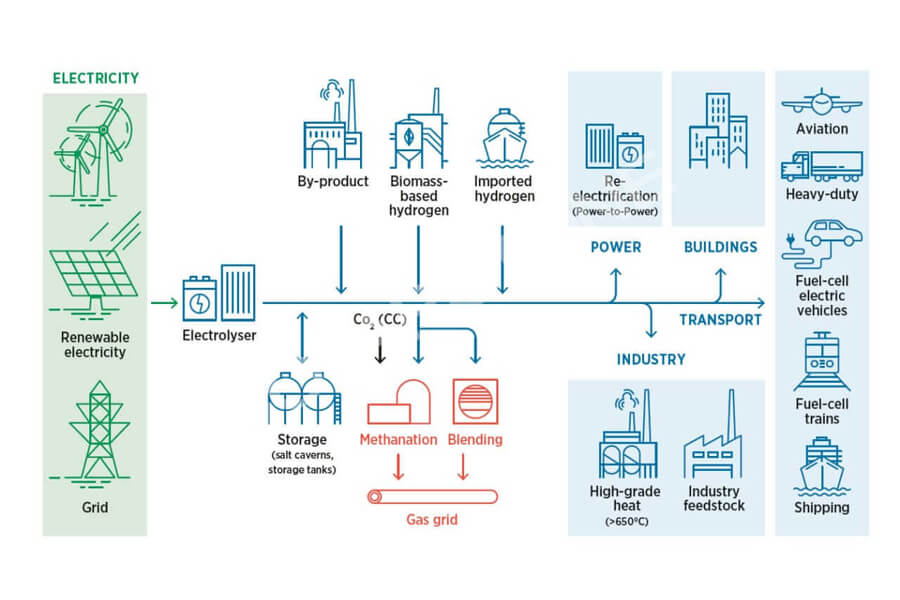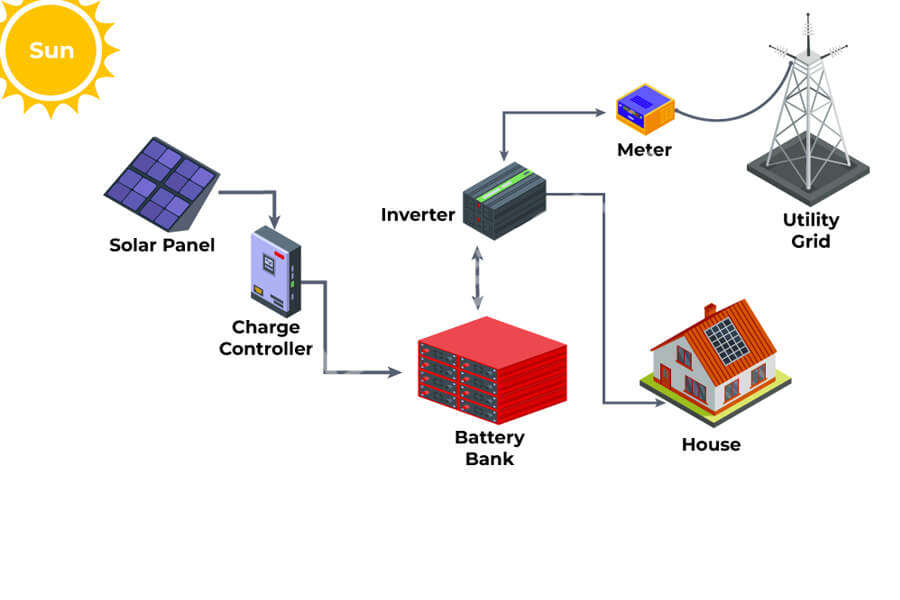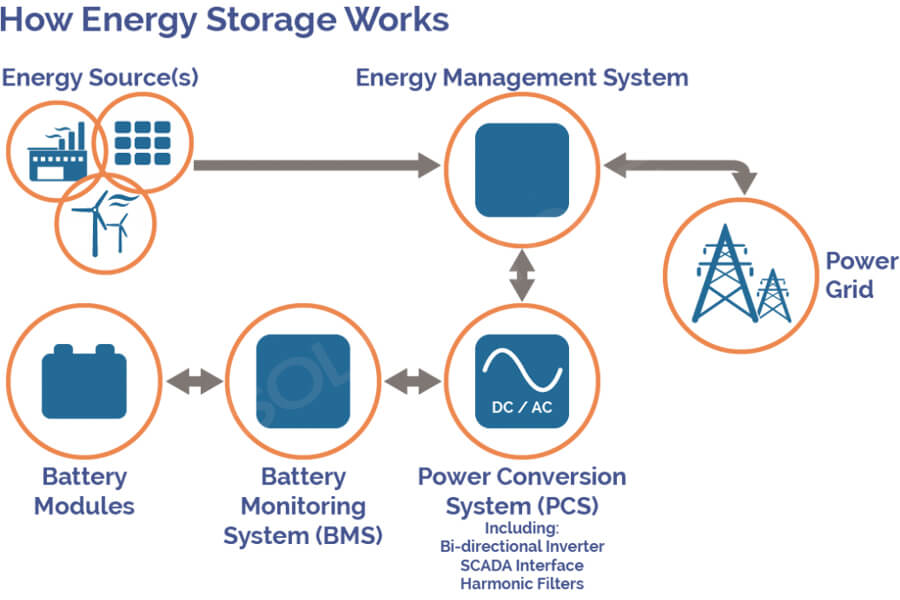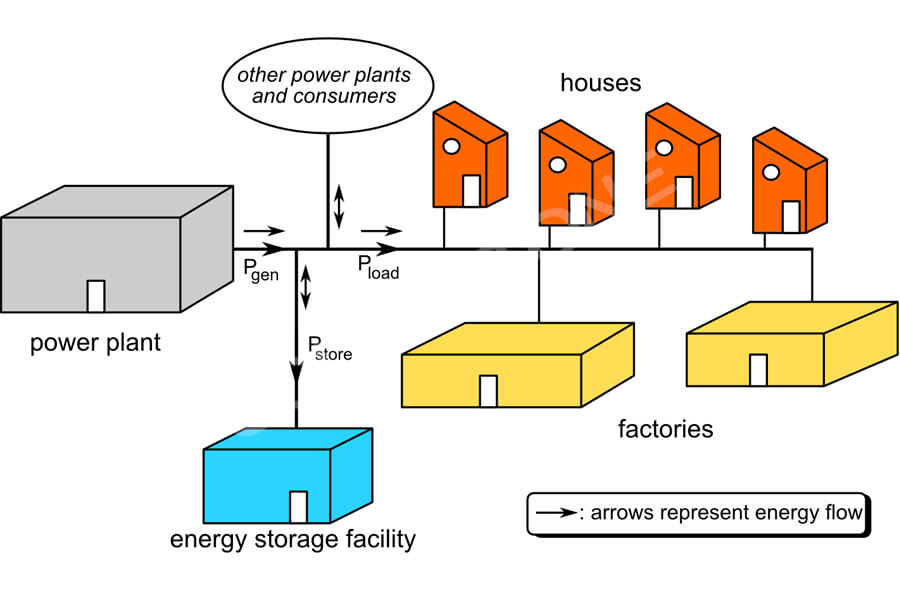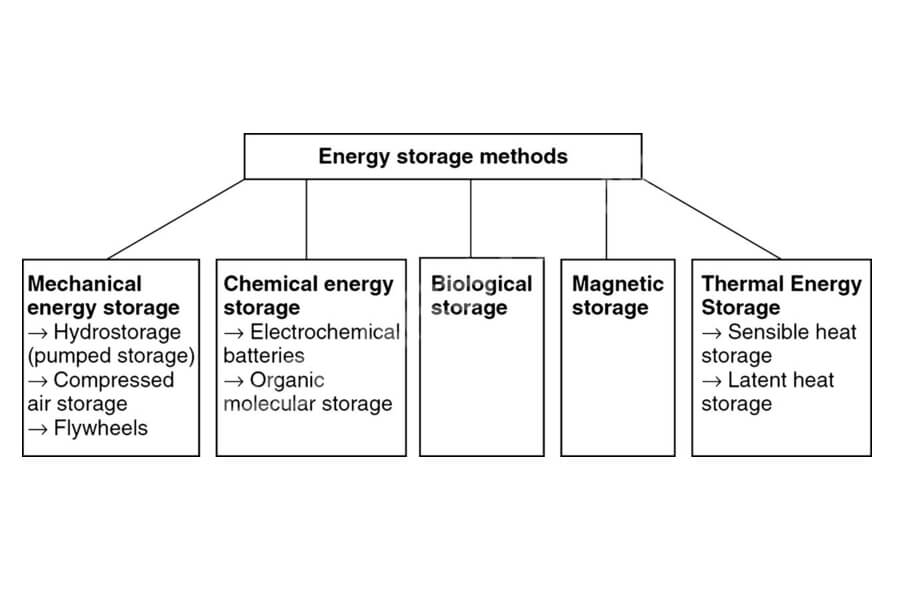Energy storage refers to the conversion of electrical energy into other forms of energy for storage. The basic method of energy storage is to first convert electricity into other forms of energy and store it in energy storage devices, and release it when needed; According to the characteristics of energy conversion, electrical energy can be converted into kinetic energy, potential energy, and chemical energy.
The main purpose of energy storage is to achieve stable operation of electricity at the supply end, transmission end, and user end. Specific application scenarios include:
1) Applied in fields such as peak shaving and valley filling, load smoothing, and rapid adjustment of power grid frequency to improve the stability and reliability of power grid operation;
2) Applied in the field of new energy power generation to reduce the impact of instantaneous changes in photovoltaic and wind power generation systems on the power grid, and to reduce the phenomenon of “abandoning light and wind”;
3) Applied to new energy vehicle charging stations, it can reduce the impact of large-scale instantaneous charging of new energy vehicles on the power grid, and also enjoy the price difference between peaks and valleys.
At present, the main types of energy storage in the market include physical energy storage and electrochemical energy storage. According to different energy conversion methods, energy storage can be divided into physical energy storage, electrochemical energy storage, and other energy storage methods:
1) Physical energy storage includes pumped storage, compressed air storage, and flywheel energy storage, among which pumped storage has a large capacity and low electricity cost, making it the most widely used energy storage method in physical energy storage.
2) Electrochemical energy storage is a rapidly developing type of energy storage in recent years, mainly including lithium-ion battery energy storage, lead-acid battery energy storage, and liquid flow battery energy storage; Among them, lithium-ion batteries have the characteristics of good cycling characteristics and fast response speed, and are currently the main energy storage method in electrochemical energy storage.
3) Other energy storage methods include superconducting energy storage and supercapacitor energy storage, which are currently less applied due to high manufacturing costs and only have demonstration projects constructed.
Energy storage is mainly applied to power grid transmission and distribution, auxiliary services, renewable energy grid connection, distributed and microgrid, and various parts of the user side.
In terms of power grid transmission and distribution and auxiliary services, the main functions of energy storage technology are power grid peak shaving, loading, starting and alleviating transmission congestion, delaying the upgrading of transmission and distribution networks;
In terms of renewable energy grid connection, energy storage is mainly used to smooth the output of renewable energy, absorb excess electricity, reduce “wind and light waste”, and achieve instant grid connection;
In terms of distribution and microgrids, energy storage is mainly used to stabilize system output, serve as a backup power source, and improve scheduling flexibility;
On the user side, energy storage is mainly used for peak shaving and valley filling in the industrial and commercial sectors, demand side response, and energy cost management.


